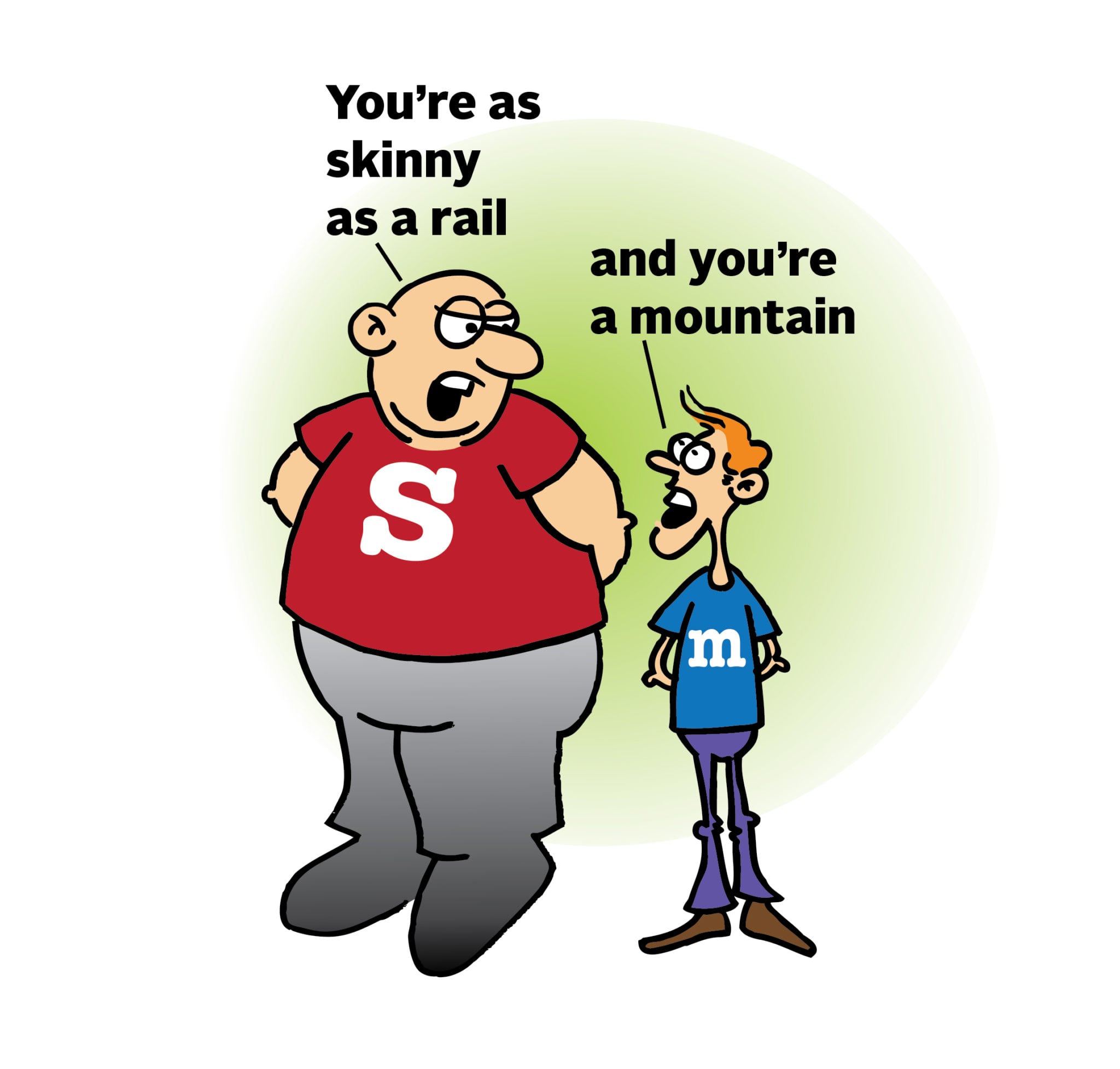4 minute read
When reading, you will notice that writers and authors will compare things to other things in order to make a point.
But what is the difference between a simile and a metaphor, you ask?
But what do these two terms mean?
They can often look and sound so similar!
Definitions
Simile: A comparison that specifically uses the words like or as.
Metaphor: A direct comparison that does not use the words like or as.
Here are Some Simile Examples
Similes are easier to recognize because we use them so often in our daily lives. They compare one thing to something else in order to make a description clearer or more vibrant. Here are some examples:
- StudyGate’s homework help feature is as quick as a flash!
- His face was as red as a tomato (Comparing this person’s face to a tomato shows exactly how embarrassed or emotional he was)
- Light as a feather (Shows how small or weightless an object is)
- Cold as ice
- The dress fits like a glove (Shows how perfectly the dress fit)
- Hard as a rock
Here are Some Metaphor Sentences
Metaphorical language is a bit more difficult to catch. They make a direct comparison to something else in order to explain a larger idea. Some examples of this would be:
- “You’re just fishing for compliments” (This doesn’t actually mean that the person uses a rod and reel to catch compliments, but explains the greater point, which is that this person is actively asking for praise)
- “Baby, you’re a firework” (This person is not actually a real explosive firework- it is a way of saying that he or she is bright, energetic, and exciting.)
- “Life is a highway” (Life isn’t really a physical street- this compares life to a long road with many detours and hazards, scenic drives and dangerous areas)
- “Getting a new computer was the icing on the cake” (Explains that a new computer was the best part of an already wonderful experience)
 How Do I Tell Them Apart?
How Do I Tell Them Apart?
The best way to tell the difference between a simile and a metaphor is to look at how close the comparison is.
Consider the following example: “His hands were as cold as ice.” How close is this comparison? You have hands, and you have ice.
The hands are AS COLD AS ice, but they are NOT ice. The hands are cold in the same way that ice is cold. That’s a simile.
However, if we take a sentence like: “He had icicles for fingers”, you’ll notice that the comparison is direct.
The fingers are icicles, and therefore we picture them to have all the same characteristics as icicles.
Aside from being cold, they are probably sharp, long, and fragile.
We gather a more complete picture of this person’s fingers as a result. This is a metaphor.
Here Is The Difference Between A Simile and A Metaphor
Similes make specific comparisons using one specific trait. Similes let us know how hot, cold, big, small, etc, something is.
They take a trait from one thing and apply it to another to say that they are alike, but it does not mean that they are the same thing.
On the other hand, metaphors make comparisons using a whole group of traits.
Metaphors let us know all the ways in which a comparison is true.
They take all the traits of one thing and apply them to another thing, and this direct sharing of traits is what creates comparison.
So, if we take two sentences: “Life is as long as a highway” and “Life is a highway”, and apply the information above, we can understand the meaning of each sentence.
The first simply compares the length of a lifetime to the length of a highway. Simple. Done.
The second sentence tells us that life has all the traits of a highway.
In addition to being long, life can also be rough, slow in some parts and quicker in others, seemingly endless, a pleasure, or a nightmare.
In other words, a metaphor says that one thing has the same traits as another thing.
StudyGate has tutors in place to give English homework help if you want to refine your understanding of similes and metaphors.
In the meantime, here’s a quick way to tell the difference:
Similar and singular = Simile
Matching and multiple = Metaphor
Finding the differences between similes and metaphors is really just the beginning.
When you start learning the more difficult literary devices, like hyperbole, apostrophe, metonymy, epistrophe, epiphany, and all the rest, you might need someone to explain all of that to you.
In the meantime, here is a similes list and some metaphor sentences. You can also access a process to researching more facts on similes and metaphors.
StudyGate is home to a whole bunch of world-class writers, teachers, college professors, and researchers at your fingertips, ready to help, whenever you need it.
If you need help coming up with some awesome similes and metaphor for your paper, we’ve got you covered!

–1,000+ tutors on demand: We source tutors who are experts in their fields.
–Get 24/7 help: We’re here to provide homework help anytime, day or night.
–Lightning-fast responses: Get homework help within minutes thanks to our staff of expert tutors.
–No subscription needed: Pay only for the help you need, when you need it.
Get Your Homework Solved In Minutes
Updated February 4, 2019 for an easier reading experience

